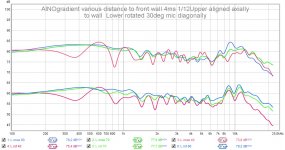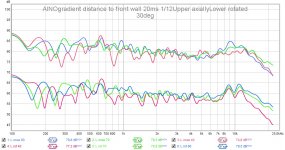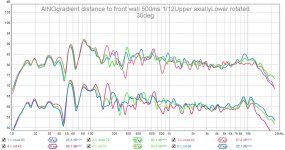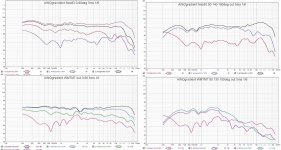Many ways to skin a cat! Nice to see these different solutions. I wanted to have a post made of of solid birch and birch plywood - hommage to designer Alvar Aalto. His first wiffe was Aino, who designed a drinking glass that gives shape to the bass "box".
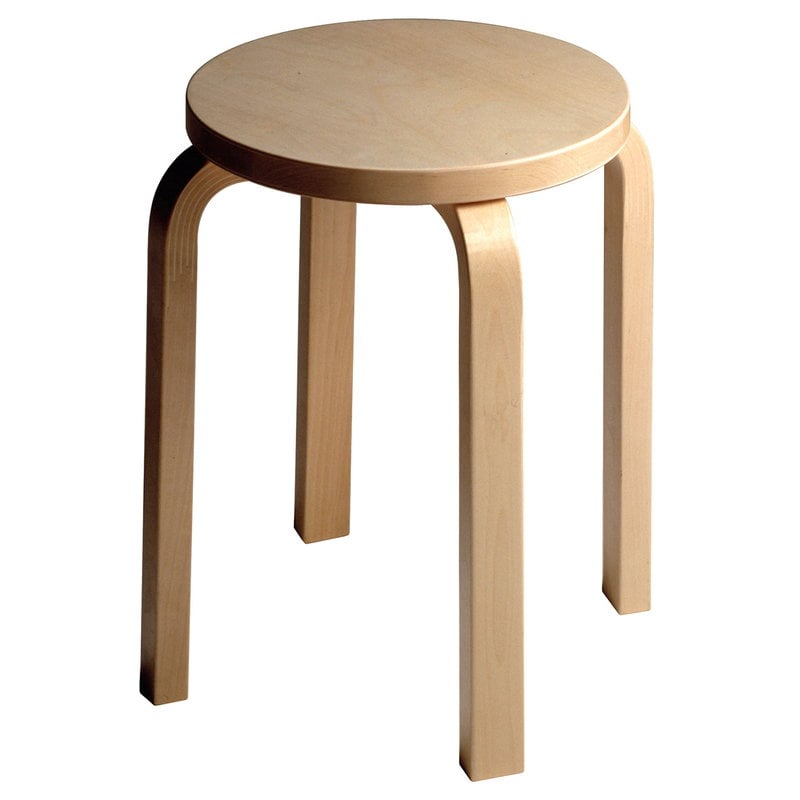



TimA asked me in another thread:
"Very interesting speakers you have there! I've been reading the thread to which you linked and agree with your preference for wide dispersion treble. Can I ask how close to the rear wall your speakers can be placed before the midrange starts to suffer, I'm thinking above 500Hz?"
So, that issue has been asked many times earlier too, but I have never tested that. The reason for this is that I can't hera a difference and measurements when moving the mic a little are dramatic too. Naturally a dipole will have more interferences with front wall than normal monopole-cardioid boxed speakers.
My house is a normal Scandinavian with wooden frame and gypsum board walls and many windows with triple glass. The speaker is in front of a window, so these measurements don't show as high amplitude of reflection interferences as in a room with concrete or tile walls.
I measured the response with the speaker projecting 90deg and 60 deg from wall plane. Distance from front wall was 40, 70 and 90cm. Mic was stationary 2m from wall, but lower than designed listening axis, so response around highest xo is attenuated. Rotated speaker responses are -20dB lower in graphs.
We can clearly see that 40cm to wall is making more aberrations than longer distances. Highest peaks/dips happen at 165, 285 and 830Hz. I couldn't hear those when running slow sweeps with REW. My normal speaker position is 60cm from wall and rotated 30deg. I don't make any eq corrections for "spot response", just bass driver level adjustment to get relative level right for my liking.
"Very interesting speakers you have there! I've been reading the thread to which you linked and agree with your preference for wide dispersion treble. Can I ask how close to the rear wall your speakers can be placed before the midrange starts to suffer, I'm thinking above 500Hz?"
So, that issue has been asked many times earlier too, but I have never tested that. The reason for this is that I can't hera a difference and measurements when moving the mic a little are dramatic too. Naturally a dipole will have more interferences with front wall than normal monopole-cardioid boxed speakers.
My house is a normal Scandinavian with wooden frame and gypsum board walls and many windows with triple glass. The speaker is in front of a window, so these measurements don't show as high amplitude of reflection interferences as in a room with concrete or tile walls.
I measured the response with the speaker projecting 90deg and 60 deg from wall plane. Distance from front wall was 40, 70 and 90cm. Mic was stationary 2m from wall, but lower than designed listening axis, so response around highest xo is attenuated. Rotated speaker responses are -20dB lower in graphs.
We can clearly see that 40cm to wall is making more aberrations than longer distances. Highest peaks/dips happen at 165, 285 and 830Hz. I couldn't hear those when running slow sweeps with REW. My normal speaker position is 60cm from wall and rotated 30deg. I don't make any eq corrections for "spot response", just bass driver level adjustment to get relative level right for my liking.
Attachments
Last edited:
Thank you for this nice thread. I got some very interesting ideas.
I have still one two more questions left:
1) Do you think with the right drivers in MTM-Design you could get similar results like with the BG NEO 3 & 8?
Example:
BG Neo 3 as Tweeter
4 x TC5FC07-04 as Mid
Two mids above and two mids under the neo3:
MM
T
MM
As alternative for the Mids: Dayton DMA 45
Or with only two mids: Tang Band W23-1287SI
Second Example:
TC5FC02-04 as Tweeter
4x Any 2,5" Mid (Again two mids above and two mids under the tweeter).
2) What do you think, is it worth to try the MTM-Design again with these Drivers?
Some thoughts:
I think the cone breakup for the 1,5" Speakers will be at 5 khz.
The advantages should be a real dappolito with a better vertical dispersion. But the disadvantage could be a more worse distortion. Will the distortion be audible?
I would use the mid from ca.550hz-2100khz.
I would appreciate to participate from your experience regarding this topics.
The third Possibility for me is to build my Dipole like you with bg neo 3 and 8.
I have still one two more questions left:
1) Do you think with the right drivers in MTM-Design you could get similar results like with the BG NEO 3 & 8?
Example:
BG Neo 3 as Tweeter
4 x TC5FC07-04 as Mid
Two mids above and two mids under the neo3:
MM
T
MM
As alternative for the Mids: Dayton DMA 45
Or with only two mids: Tang Band W23-1287SI
Second Example:
TC5FC02-04 as Tweeter
4x Any 2,5" Mid (Again two mids above and two mids under the tweeter).
2) What do you think, is it worth to try the MTM-Design again with these Drivers?
Some thoughts:
I think the cone breakup for the 1,5" Speakers will be at 5 khz.
The advantages should be a real dappolito with a better vertical dispersion. But the disadvantage could be a more worse distortion. Will the distortion be audible?
I would use the mid from ca.550hz-2100khz.
I would appreciate to participate from your experience regarding this topics.
The third Possibility for me is to build my Dipole like you with bg neo 3 and 8.
Hi,
I've seen multiple dipole mids in vertical or circular array in many threads here. It's just about what aspects will get better or worse, "ideal" widerange dipole does not exist!
My MTM sounded pretty good, but measurements on the backside were disappointing. Above 2-3kHz spider and motor of a cone driver mess the backside dispersion, but obviously total radiated energy is practcally same as frontside.
Vertical dispersion is more of a challlnge because of interdriver distance getting easily too big.
All these issues that cannot be simulated, prototyping and careful measuments are necessary! Actually this is the most fun part of speaker buiilding hobby!
I've seen multiple dipole mids in vertical or circular array in many threads here. It's just about what aspects will get better or worse, "ideal" widerange dipole does not exist!
My MTM sounded pretty good, but measurements on the backside were disappointing. Above 2-3kHz spider and motor of a cone driver mess the backside dispersion, but obviously total radiated energy is practcally same as frontside.
Vertical dispersion is more of a challlnge because of interdriver distance getting easily too big.
All these issues that cannot be simulated, prototyping and careful measuments are necessary! Actually this is the most fun part of speaker buiilding hobby!
Last edited:
Hmmm, if we take a look at the visaton frs5x measured by rudolf, there is no problem till 4khz. So a bad dispersion on the backside begins with the cone breakup. (This is logical because lambda is then in thee range of the size of the basket)
Therefore i think you have used to big Mids.If you use the Tc5 or the Dma45 should get better results then with the frs5x (if there are not some special problems with them)
With the bg neo 3 you get the first problems at 6-7khz. This should be better then with the tc5fc02 (because of the cone breakup at 5khz).
How du you would describe the sound difference between Neo 8 and the other Mids?
I prefer to buy the neo 3 and do only think about a good solution for the mids.
Therefore i think you have used to big Mids.If you use the Tc5 or the Dma45 should get better results then with the frs5x (if there are not some special problems with them)
With the bg neo 3 you get the first problems at 6-7khz. This should be better then with the tc5fc02 (because of the cone breakup at 5khz).
How du you would describe the sound difference between Neo 8 and the other Mids?
I prefer to buy the neo 3 and do only think about a good solution for the mids.
Sound difference will be minimal with dsp. Dispersion differencies are very difficult to hear!
At very high spl distortion might make a difference.
At very high spl distortion might make a difference.
Thank you!
So i will take a nearer look on these three possible drivers. Especially distortion and perhaps backside dispersion.Propably i go to open a new thread.
So i will take a nearer look on these three possible drivers. Especially distortion and perhaps backside dispersion.Propably i go to open a new thread.
Here we can compare the difference of dispersio between AINOgradient with MTM pole (with monopole horn tweeter) vs. Neo83 with planar mid and dipole.
Cone mids lost dipole pattern at 3kHz and horn tweeter had no radiation backwards. The greatest diffrence in audition in a room was treble sound. Horn tweeter sounded very prescise and sharp, but lacked the decay and "air" of dipoles. Backside helper tweeter helped retty much, but planars have superior dispersion and sound is practically just the same everywhere in the room!
Cone mids lost dipole pattern at 3kHz and horn tweeter had no radiation backwards. The greatest diffrence in audition in a room was treble sound. Horn tweeter sounded very prescise and sharp, but lacked the decay and "air" of dipoles. Backside helper tweeter helped retty much, but planars have superior dispersion and sound is practically just the same everywhere in the room!
Attachments
Ok. I wanted to combine true dappolito as mtm in a dipol speaker.
The best tweeter for this is bg neo 3 what i have seen so far. Especially the ratio betwen dipolwitdh - crossover ratio is good enough to use it in a dappolito mtm configuration.
In theory the best Mids that i have found on loudspeaker-database are
peerlees Tc5fc07
dayton dma 45
If overlapped the distance between Neo3 and Mid will be something like 51-52 mmm.
The next bigger speaker that i have found and that is possible is the w23 from tangband will have a neo3-Mid distance of 59mm).
2 of the w23 havve the same vd like 4 of the peerless. Only the dayton dma have slighty more....
Do somebody know the peerless or the dayton above? distortion level? overall sound quality? The dayton dma45 is especially made for good 8 form (do they mean the dipol 8?).
The best tweeter for this is bg neo 3 what i have seen so far. Especially the ratio betwen dipolwitdh - crossover ratio is good enough to use it in a dappolito mtm configuration.
In theory the best Mids that i have found on loudspeaker-database are
peerlees Tc5fc07
dayton dma 45
If overlapped the distance between Neo3 and Mid will be something like 51-52 mmm.
The next bigger speaker that i have found and that is possible is the w23 from tangband will have a neo3-Mid distance of 59mm).
2 of the w23 havve the same vd like 4 of the peerless. Only the dayton dma have slighty more....
Do somebody know the peerless or the dayton above? distortion level? overall sound quality? The dayton dma45 is especially made for good 8 form (do they mean the dipol 8?).
Here we can compare the difference of dispersio between AINOgradient with MTM pole (with monopole horn tweeter) vs. Neo83 with planar mid and dipole.
Cone mids lost dipole pattern at 3kHz and horn tweeter had no radiation backwards. The greatest diffrence in audition in a room was treble sound. Horn tweeter sounded very prescise and sharp, but lacked the decay and "air" of dipoles. Backside helper tweeter helped retty much, but planars have superior dispersion and sound is practically just the same everywhere in the room!
i hope i understood it right. the point is cone mids lost dipole pattern depending on their size. (If there are not special problem wiht the driver). The 2" driver frs5x loses his dipol pattern at 4khz. Therefore i think probably a small midrange is a possible solution for a good dispersion.
Hi Juha, and all.
As the original Beyma is out of production I am looking for alternatives. I have two contestors, https://www.supersonic.se/dokument/Broschyr 12PR300.pdf
Gaital pro 12PR300 and, https://www.eminence.com/pdf/DeltaliteII_2512.pdf, Eminence Deltalite II 2512.
I am designing a speaker using the Heil AMT1. Stacked... so a 12” with high efficiency would be nice. Would these be ok? Any other driver I should consider? I have been so focused on open baffle that I missed this design. It starts to make more sense as keep reading this and other posts.
As the original Beyma is out of production I am looking for alternatives. I have two contestors, https://www.supersonic.se/dokument/Broschyr 12PR300.pdf
Gaital pro 12PR300 and, https://www.eminence.com/pdf/DeltaliteII_2512.pdf, Eminence Deltalite II 2512.
I am designing a speaker using the Heil AMT1. Stacked... so a 12” with high efficiency would be nice. Would these be ok? Any other driver I should consider? I have been so focused on open baffle that I missed this design. It starts to make more sense as keep reading this and other posts.
Hejsan dawa!
I believe that both will be just fine. Pick up the one that looks prettier nude! With dsp we can equalize the response easily and we are using each driver in it's comfort zone, so sonically almost anything goes fo midrange. Tweeter is the most problematic driver and always a compromise I guess.
Prepare to change your mind and at least to try different alternatives. I strongly recommend that you make a single quick and dirty prototype first, learn how to take measurements and to set up dsp. Different drivers need different pole/frame too.
Trevlig äventyr!
Juha
I believe that both will be just fine. Pick up the one that looks prettier nude! With dsp we can equalize the response easily and we are using each driver in it's comfort zone, so sonically almost anything goes fo midrange. Tweeter is the most problematic driver and always a compromise I guess.
Prepare to change your mind and at least to try different alternatives. I strongly recommend that you make a single quick and dirty prototype first, learn how to take measurements and to set up dsp. Different drivers need different pole/frame too.
Trevlig äventyr!
Juha
Dawa, look at acoustic elegance drivers, they should be quite free from voice coil cooling noises.
Ok thanks!
But first I have to test the Lii-audio W-15 I bought last year! Have not come around to test them yet! But thats another story! Now I start to go in this direction insted! Also got my hands on a used Deqx hdp-3 so yes there are no ”limits”. Thats the problem!
But now I also got in to hacking the IKEA Symfonisk SONOS speaker! You can build any two way speaker with a hacked pair! Just use Truplay and the app will make a curv for the room and download it to youor dsp/amp! Wish deqx could do that! I have tested with different drivers and it will fix the freakvency curv in the listening position. If you are not happy, do it again! It only take one minute! Now its NOT ”high, hi-fi” but convenience and the room correction is very interesting! And so is the idea with Gradient 1.x. The room matters..not the curv! So yes so many options!
kiitos ja mukavaa kuuntelua!
But first I have to test the Lii-audio W-15 I bought last year! Have not come around to test them yet! But thats another story! Now I start to go in this direction insted! Also got my hands on a used Deqx hdp-3 so yes there are no ”limits”. Thats the problem!
But now I also got in to hacking the IKEA Symfonisk SONOS speaker! You can build any two way speaker with a hacked pair! Just use Truplay and the app will make a curv for the room and download it to youor dsp/amp! Wish deqx could do that! I have tested with different drivers and it will fix the freakvency curv in the listening position. If you are not happy, do it again! It only take one minute! Now its NOT ”high, hi-fi” but convenience and the room correction is very interesting! And so is the idea with Gradient 1.x. The room matters..not the curv! So yes so many options!
kiitos ja mukavaa kuuntelua!
I'm watching this movie now, from TV!
AALTO di Virpi Suutari (trailer) - YouTube
Alvar Aalto's first wife Aino was a carpenter and co-designer of furniture, details and small objects in their large design projects.
The Aino glass
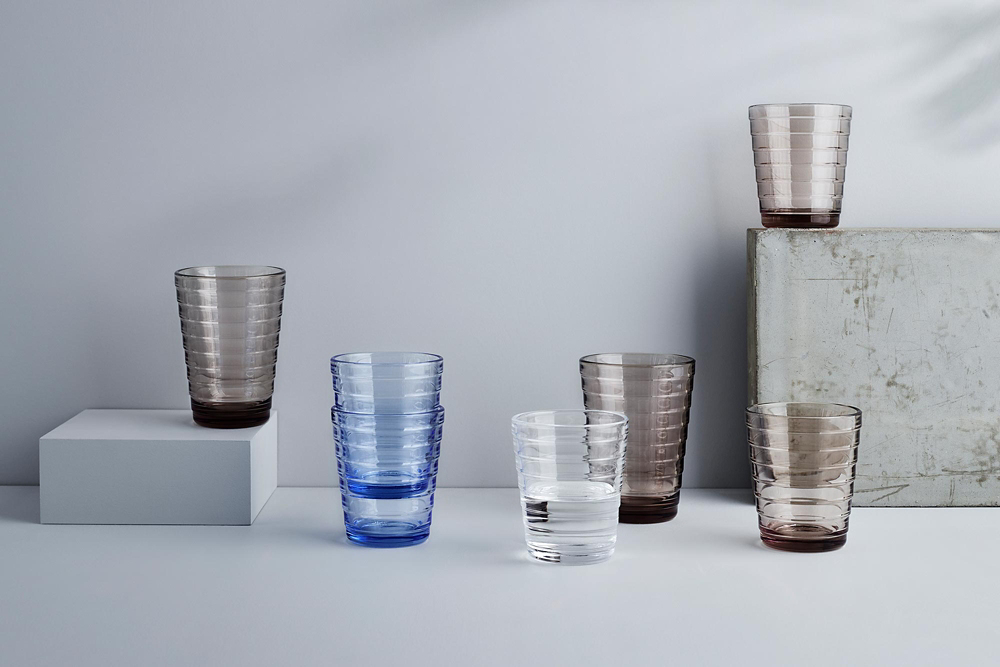
Alvar Aalto spent his school years here in Jyväskylä and his first office was here. We have also many buildings designed by him spanning 30-70s, even his summer house and a dedicated museum.
AALTO di Virpi Suutari (trailer) - YouTube
Alvar Aalto's first wife Aino was a carpenter and co-designer of furniture, details and small objects in their large design projects.
The Aino glass

Alvar Aalto spent his school years here in Jyväskylä and his first office was here. We have also many buildings designed by him spanning 30-70s, even his summer house and a dedicated museum.
Last edited:
How you managed to hide mid and tweeter dipole peaks and minimums in polar plot?I got back to my last summer outdoor measurements and made new 0-180¤ polar plots of them. Measured outdoors at 150cm, 12ms gating, 10¤ steps. Some grass bounces betweet 500-700Hz. Notice cardioid response in transition area 100-200Hz between monopole bass and dipole mid-high sections.
4-way construction is needed to use only the pure dipole band of each radiator! Very simple, but the tweeter band above 2-4kHz will always be compromised!
First use simulation and wild guesses ( I like The Edge) to get the basic idea right (start a thread at diyaudio to get better ideas)
Then purchase drivers and make a test baffle
Then do polar measurements of each driver to find out dipole peak and axial null etc. and distortion at high spl. Don't forget vertical polars at least up to 60deg and try different xo points and orders
Then eq each driver to be flat at least one octave beyond intended xo
Then buy some better suited drivers and do measurements of them
Then redo or make changes to the frame to minimize diffractions
Then make final frames/baffle etc, and install drivers
Then do polar measurements of final drivers in final baffle
Then figure out where and how steep xo to apply (multi-channel dsp), and eq responses with dsp
Then measure bandpassed responses and set delays right for each xo (start from tweeter/upper mid) and adjust gain/spl
Then measure the summed/total polar responses and distortion, as well room response with various methods (multiple measurements with different mic locations) and do final low Q eq to get pleasing sound balance in your room
Then enjoy the music and write a report and keep on bragging at forum!
First use simulation and wild guesses ( I like The Edge) to get the basic idea right (start a thread at diyaudio to get better ideas)
Then purchase drivers and make a test baffle
Then do polar measurements of each driver to find out dipole peak and axial null etc. and distortion at high spl. Don't forget vertical polars at least up to 60deg and try different xo points and orders
Then eq each driver to be flat at least one octave beyond intended xo
Then buy some better suited drivers and do measurements of them
Then redo or make changes to the frame to minimize diffractions
Then make final frames/baffle etc, and install drivers
Then do polar measurements of final drivers in final baffle
Then figure out where and how steep xo to apply (multi-channel dsp), and eq responses with dsp
Then measure bandpassed responses and set delays right for each xo (start from tweeter/upper mid) and adjust gain/spl
Then measure the summed/total polar responses and distortion, as well room response with various methods (multiple measurements with different mic locations) and do final low Q eq to get pleasing sound balance in your room
Then enjoy the music and write a report and keep on bragging at forum!
Last edited:
Actually this is what I am interested the most as I am struggling with my AMTPRO4 polar response.... but the tweeter band above 2-4kHz will always be compromised!
Why on tweeter responses no dipole peaks and minimums visible?
As my estimation lower tweeter first dipole peak is probably at about 3-4 kHz, first minimum at 6-8 kHz, on higher tweeter little higher, but for both no trace of peaks and minimums in polar plot. At dipole peak this kind of OB speakers (basically small U-frame OB) as are your tweeters, must have nearly omnidirectional polar response.
Last edited:
4-way construction is needed to use only the pure dipole band of each radiator! Very simple, but the tweeter band above 2-4kHz will always be compromised!
First use simulation and wild guesses ( I like The Edge) to get the basic idea right (start a thread at diyaudio to get better ideas)
Then purchase drivers and make a test baffle
Then do polar measurements of each driver to find out dipole peak and axial null etc. and distortion at high spl. Don't forget vertical polars at least up to 60deg and try different xo points and orders
Then eq each driver to be flat at least one octave beyond intended xo
Then buy some better suited drivers and do measurements of them
Then redo or make changes to the frame to minimize diffractions
Then make final frames/baffle etc, and install drivers
Then do polar measurements of final drivers in final baffle
Then figure out where and how steep xo to apply (multi-channel dsp), and eq responses with dsp
Then measure bandpassed responses and set delays right for each xo (start from tweeter/upper mid) and adjust gain/spl
Then measure the summed/total polar responses and distortion, as well room response with various methods (multiple measurements with different mic locations) and do final low Q eq to get pleasing sound balance in your room
Then enjoy the music and write a report and keep on bragging at forum!
Brilliant!! And so true (having done almost exactly the same!) ;-)
Last edited:
Juhazi,
What are your thoughts about the band where the radiation is cardioid in your system. Specifically, what do you think (now that you have lived with it, etc.) is the best target band for cardioid radiation?
I am thinking about building a dipole on top of a small upward facing closed box subwoofer and I would like to plan the overlap region, and thus the requirements for the dipole driver. I would like to keep the footprint small, but this would require the dipole driver to also be small (e.g. 10" or less) and 100Hz dipole SPL capability might be too limited and the lower edge of the cardioid pattern might have to be higher. I am not sure that would be useful/helpful.
What are your thoughts about the band where the radiation is cardioid in your system. Specifically, what do you think (now that you have lived with it, etc.) is the best target band for cardioid radiation?
I am thinking about building a dipole on top of a small upward facing closed box subwoofer and I would like to plan the overlap region, and thus the requirements for the dipole driver. I would like to keep the footprint small, but this would require the dipole driver to also be small (e.g. 10" or less) and 100Hz dipole SPL capability might be too limited and the lower edge of the cardioid pattern might have to be higher. I am not sure that would be useful/helpful.
- Home
- Loudspeakers
- Multi-Way
- Aino gradient - a collaborative speaker project
